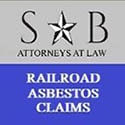
Exposure to asbestos can have severe health consequences, but these consequences often do not manifest until many years after the initial exposure. This latency period between exposure and the onset of illness can be confusing and alarming for those affected. In this comprehensive blog post, we aim to demystify the reasons behind the delayed onset of asbestos-related diseases, the nature of these illnesses, and what individuals and families can do if they suspect asbestos exposure.
Understanding the complexities of asbestos-related diseases is crucial for those who have been exposed, as well as their families. The long latency period poses a significant challenge in diagnosing and treating these diseases early. This post will provide a detailed exploration of why asbestos-related diseases take years to manifest, delving into the scientific, medical, and regulatory aspects that contribute to this prolonged period between exposure and illness.
Understanding Asbestos and Its Uses
What is Asbestos?
Asbestos is a naturally occurring mineral composed of flexible fibers that are resistant to heat, electricity, and chemical corrosion. These properties made asbestos a popular choice in a variety of industries, especially in construction, automotive, and manufacturing. The mineral is composed of silicate compounds, which include silicon and oxygen, giving it remarkable durability and versatility.
Asbestos fibers are microscopic, making them easy to inhale or ingest. Once they enter the body, they can become lodged in tissues, leading to chronic inflammation and cellular damage over time. This persistent presence in the body is a key factor in the long latency period of asbestos-related diseases. The mineral’s resistance to breakdown means that these fibers can remain in the body for decades, continuously causing harm.
Historical Uses of Asbestos
For much of the 20th century, asbestos was hailed as a “miracle mineral.” It was used extensively in a wide range of products and applications due to its fire-resistant and insulating properties. The construction industry, in particular, heavily relied on asbestos for its ability to enhance the durability and safety of buildings.
Building Materials: Asbestos was commonly found in insulation, roofing shingles, floor tiles, cement, and plaster. Its fire-resistant properties made it a preferred material for enhancing the safety of residential and commercial buildings.
Automotive Parts: The automotive industry utilized asbestos in brake pads, clutch facings, and gaskets due to its ability to withstand high temperatures and reduce wear and tear on mechanical components.
Industrial Applications: Asbestos was used in various industrial applications, including fireproofing, soundproofing, and heat-resistant fabrics. It was also employed in chemical plants and power plants for its resistance to chemical reactions and high temperatures.
Despite its widespread use, the health risks associated with asbestos exposure were not fully understood until much later. By the time regulations were implemented, millions of people had already been exposed to asbestos in their workplaces, homes, and communities.
Regulation and Decline
The dangers of asbestos exposure became widely recognized in the latter half of the 20th century. This led to stringent regulations and a significant decline in its use. Regulatory agencies around the world, including the Occupational Safety and Health Administration (OSHA) in the United States, began to impose strict limits on asbestos exposure in the workplace and banned its use in many products.
Despite these measures, the legacy of asbestos remains, as older buildings and products still contain this hazardous material. Many structures built before the implementation of these regulations still harbor asbestos-containing materials, posing ongoing risks to workers and residents. The presence of asbestos in older buildings necessitates careful management and abatement procedures to prevent further exposure.
The decline in asbestos use has not eradicated the problem, as asbestos-related diseases continue to emerge decades after exposure. This ongoing challenge underscores the importance of continued vigilance, education, and regulation to protect current and future generations from the harmful effects of asbestos.
The Latency Period of Asbestos-Related Diseases
Defining Latency Period
The latency period refers to the time between initial exposure to a harmful substance and the manifestation of related health issues. For asbestos-related diseases, this period can range from 10 to 50 years, and sometimes even longer. This extended latency period is one of the most perplexing aspects of asbestos-related illnesses, making early detection and intervention challenging.
The long latency period can be attributed to the slow and gradual process of disease development. After asbestos fibers are inhaled or ingested, they embed themselves in the body’s tissues, causing minimal immediate symptoms. Over time, these fibers provoke chronic inflammation, cellular damage, and genetic mutations, eventually leading to the development of serious diseases such as mesothelioma, lung cancer, and asbestosis.
Factors Influencing Latency Period
Several factors influence the length of the latency period for asbestos-related diseases, contributing to the variability in how quickly symptoms appear after exposure. Understanding these factors can help in assessing the risk and potential onset of illness.
Duration and Intensity of Exposure: Prolonged and heavy exposure to asbestos increases the risk and can potentially shorten the latency period. Individuals who worked in industries with high levels of asbestos, such as construction, shipbuilding, and manufacturing, are at a greater risk of developing asbestos-related diseases more quickly.
Age at Exposure: Younger individuals tend to have a longer latency period compared to those exposed later in life. The body’s response to asbestos exposure can vary with age, with younger bodies potentially taking longer to exhibit symptoms due to more robust immune responses and tissue repair mechanisms.
Genetic Factors: Genetic predisposition can influence how quickly symptoms develop. Certain genetic mutations may make some individuals more susceptible to the damaging effects of asbestos fibers, leading to earlier onset of disease.
Type of Asbestos Fiber: Different types of asbestos fibers (e.g., chrysotile, amosite, crocidolite) have varying levels of risk and latency periods associated with them. Crocidolite, for example, is considered the most dangerous form of asbestos due to its thin, needle-like fibers that can penetrate deeply into lung tissue and cause more severe damage.
Each of these factors contributes to the complexity of predicting and diagnosing asbestos-related diseases. The interplay between these variables means that two individuals with similar exposure levels can experience vastly different outcomes in terms of the onset and severity of illness.
Cancer Caused By Asbestos Exposure Can Take Up to Fifty Years to Appear
Asbestos exposure has been linked to numerous life-threatening illnesses, including mesothelioma, lung cancer, throat cancer, esophageal cancer, stomach cancer, colon cancer, and non-cancerous chronic asbestosis. These cancers can take decades to develop after initial exposure, with latency periods extending up to fifty years. The durable and resistant nature of asbestos fibers contributes to this prolonged latency, as the fibers can remain lodged in bodily tissues for many years, causing chronic inflammation and genetic damage that eventually leads to cancer.
If you or a loved one has developed any of these illnesses after working in an environment with asbestos, our team at Sammons & Berry P.C. is here to help. Currently, over $30 billion has been allocated in asbestos trust funds to compensate individuals who develop health problems due to asbestos exposure. We streamline the process for filing claims against these trusts, ensuring that you receive the compensation you deserve.
Our law firm operates on a contingency basis, which means we only receive payment if we successfully recover compensation for your case. This ensures that you have nothing to lose when you reach out to our experienced team. If a family member has passed away from an asbestos-related illness, you may still qualify for compensation. However, it is crucial to act quickly as there are time limitations for filing claims. Contact us today to explore your options and secure the justice you deserve.
Free Asbestos Exposure Consultation in State of Texas
At Sammons & Berry, P.C. we offer a no-cost, no-obligation consultation, so you can discuss the facts of your case without paying for anything upfront. Asbestos trusts claims do not require a lawsuit, depositions, or courtrooms. The process is simple and easy for the client and should not require any stressful legal confrontations for the client. The law firm handles all of the claims for the client, helping you maximize your compensation.
We do not accept any payments from our clients until they receive compensation. We charge on a contingent fee basis, which means you pay a percentage of what you get paid in your claim. If we are unable to collect anything for you, there is no cost to you.
Call (800) 519-1440 to speak with a Sammons and Berry, P.C. representative and start your journey towards compensation.
Wrongful Death Claims For Families of Asbestos Victims
If you have lost someone in your family due to the harmful exposure of asbestos, you may be entitled to compensation. If you can provide the work history and a death certificate for your loved one, our attorneys can help you file an asbestos claim. We understand how difficult this process can be, this is why we work with you every step of the way to help you get the money you deserve. Reach out to our team today to learn more about filing a claim for a family member.
See if you qualify for compensation
Sammons & Berry, P.C.
800-519-1440
View our Google Listing
View our Facebook


